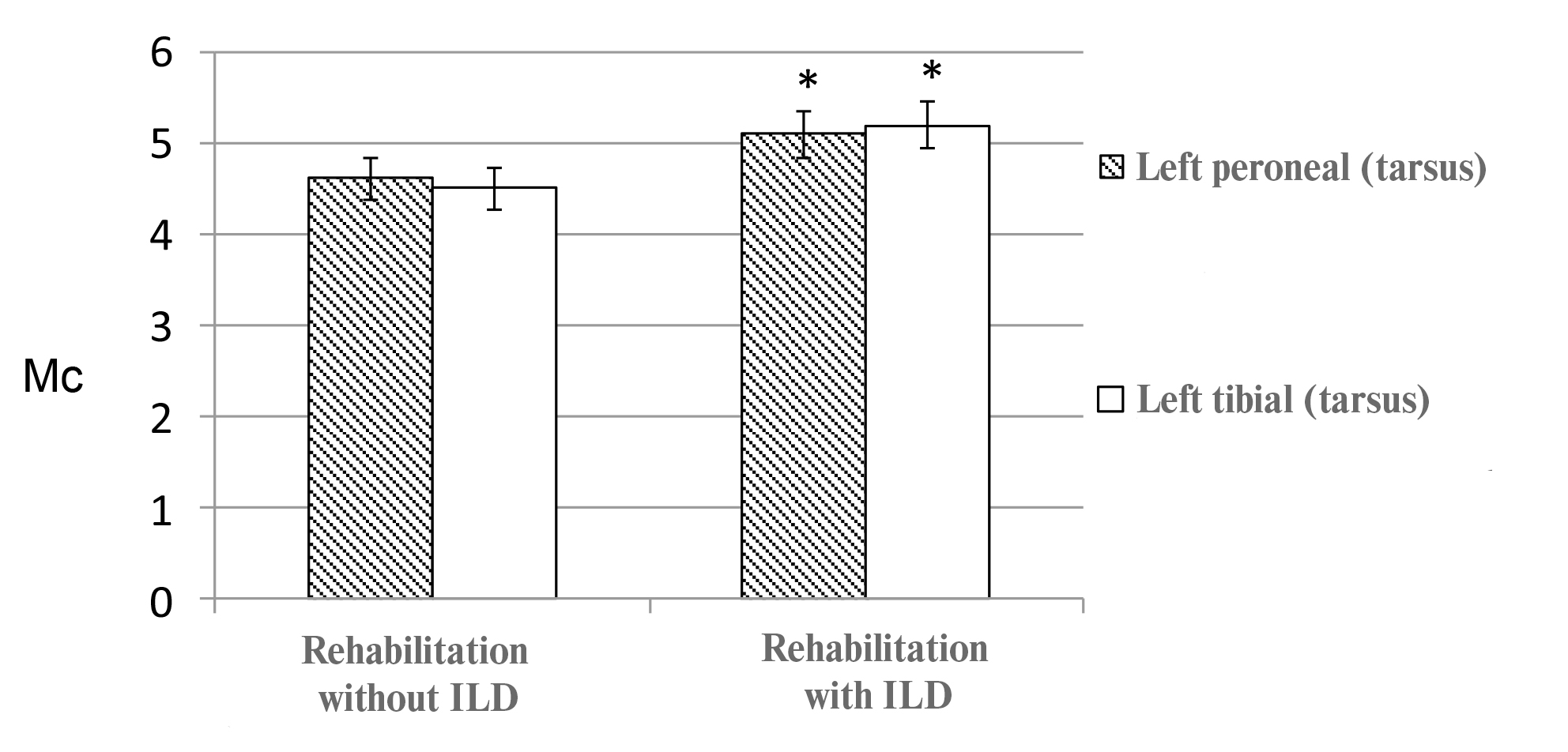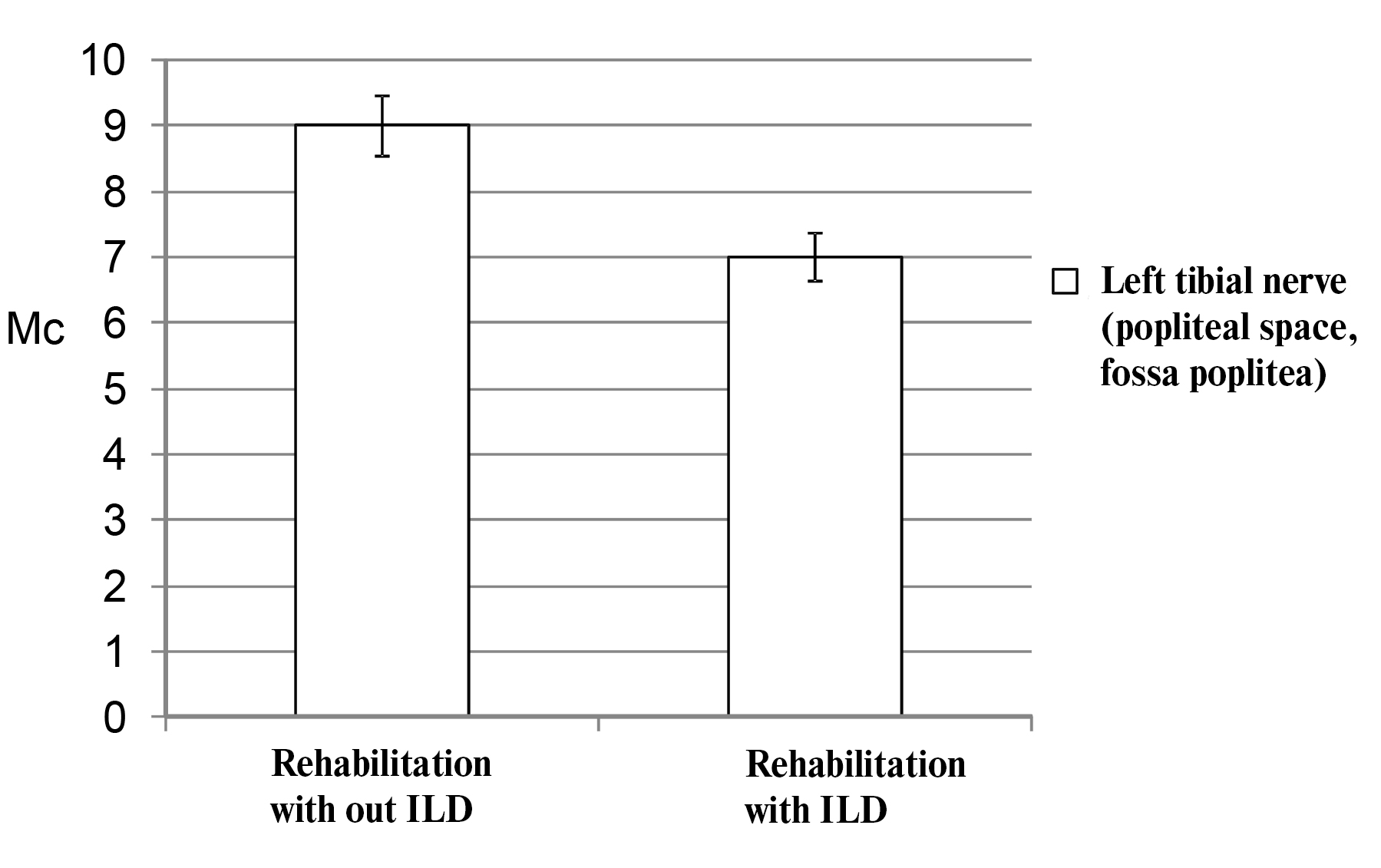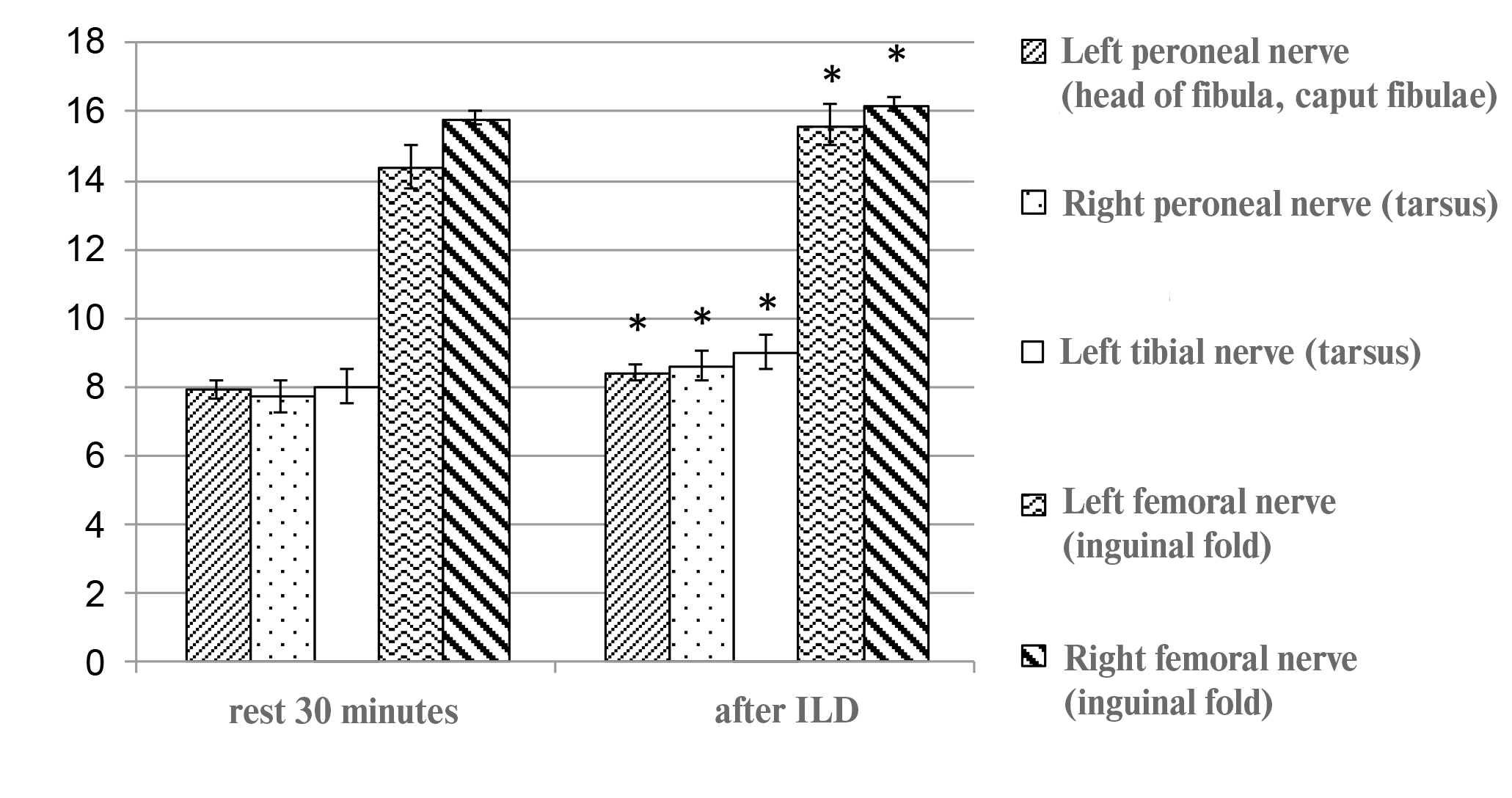Mechanical lymph drainage for urgent restoration of cyclists after maximal load
Фотографии:
ˑ:
Postgraduate K.S. Zaytsev1
Dr.Med., professor G.S. Dubiley2
Dr.Biol., professor J.V. Koryagina1
1Siberian State University of Physical Culture and Sport, Omsk
2Omsk State Medical Academy, Department of Medical Rehabilitation, Omsk
Keywords: neuromuscular system, electroneuromyography, rheovasography, instrumental lymphatic drainage (ILD), cyclist, functional state.
Introduction
It is the growing loads in the modern sport training systems that explain the need for more effective and sophisticated methods to mobilize body reserve capacities and rehabilitation technologies for elite athletes [1-3].
Objective of the study was to explore the effects and contribution of the instrumental lymphatic drainage (pneumatic massage) therapy in the intensive rehabilitation of the neuromuscular system functional state and peripheral hemodynamics after maximal special workloads in cycling sport.
Materials and methods
The study was performed at the premises of Siberian State University of Physical Culture and Sport and Omsk Rehabilitation Centre. Subject to the tests were 30 active sport cyclists of 17 to 22 years of age qualified as Candidates for Master of Sport and Masters of Sport and having 5 ± 1.5 years-long sport career records. Every subject athlete was found to be healthy and having no contraindications for the pneumatic massage therapy. The study program was designed to include two test cycles with a rest break of 2 days in between. Cycle ergometer tests were used to apply the maximal loads in the study, with the tests being designed in accordance with the standard load-phased-rising test procedure. The starting load was set at 70W and increased by 30W every 2 minutes till the preset final points of the load test were achieved. Normally the test was performed to failure of the tested athlete due to fatigue. After the second test cycle, the athletes were subject to the instrumental lymphatic drainage (ILD) therapy. It was “Lympha-A” Apparatus (made in Russia) programmed for the “running wave” therapeutic treatment mode that was used in the tests. Therefore, the athletes were actually subject to two test cycles: the first test was run without the ILD therapy, and the second test with ILD therapy.
The athletes’ neuromuscular system functional state was measured in 30 minutes after the loads through the electroneuromyographic test procedure developed by S.G. Nikolaev [4] using the Neuro-MVP System (made by Neurosoft company, Ivanovo, Russia) with surface (skin-fixed) pickup electrodes being applied for data recording. Peripheral hemodynamics data of the cyclists were obtained 30 minutes after the loads through the rheovasographic tests using a 6-channel “Reo-Spectr” Rheovasographic Unit (made by Neurosoft company, Ivanovo, Russia). Rheovasograms were recorded simultaneously for two adjacent symmetrically located segments of an extremity (the thigh-shin segments). The statistical data processing was designed to match two independent variables using Wilcoxon test, with the calculations performed using Statistica software tools. The values of p < 0.05 were assumed as indicative of a statistically significant difference.
Results and discussion

Figure 1. M-response latent-period indices of the tested cyclists 30 minutes after Test 1 and Test 2 (without and with instrumental lymphatic drainage therapy, respectively), (Хaverage ± m); *p < 0.05
The study data showed reliable changes in the latent period indices of the testes cyclists as a result of the instrumental lymphatic drainage therapy that may be indicative of the slow-type fibers being prevalent and of the differentiated effects of the instrumental lymphatic drainage therapy applied for the lower-limb neuromuscular system adaptation purposes.
In the process of the instrumental lymphatic drainage therapy being applied for rehabilitation, the M-response rates showed reliable growths (see Figure 2 hereunder). The М-response rates for the neuromuscular contacts being on the rise may be indicative of the change in the induced electric activity of the muscles involved in the main motor action that facilitates the impulses being summated and the flexional responses being synchronized.

Figure 2. M-response latent-period indices of the tested cyclists 30 minutes after Test 1 and Test 2 (without and with instrumental lymphatic drainage therapy, respectively), (Хaverage ± m); *p < 0.05
Of special interest in the tests is the significant growth of the M-response maximum amplitude (see Figure 3 hereunder). This index is characteristic of the general quantity of the motor fibers involved in the flexion induced by the maximal stimulation of the nerve and, hence, of the speed-and-strength qualities of the muscles involved in the dynamic loads.
The M-response times were found to shorten in the process of the instrumental lymphatic drainage therapy being applied for rehabilitation (see Figure 4 hereunder) that may be indicative of the shorter muscle activation times under the loads and, hence, of the optimization of the musculoskeletal action timing in the process.

Figure 3. M-response latent-period indices of the tested cyclists 30 minutes after Test 1 and Test 2 (without and with instrumental lymphatic drainage therapy, respectively), (Хaverage ± m); *p < 0.05

Figure 4. M-response latent-period indices of the tested cyclists 30 minutes after Test 1 and Test 2 (without and with the instrumental lymphatic drainage therapy, respectively), (Хaverage ± m); *p < 0.05
The lower-limb peripheral hemodynamics intensive rehabilitation tests were positive too. In the process of the instrumental lymphatic drainage therapy being applied for rehabilitation, the blood volume velocity in the left thigh notably increased and reached the normal values (BV=0.9-1.5 standard units). Furthermore, the tests showed some increase of the average blood velocity in the average- and small-size arteries (BVaverage). This may be indicative of the one-way cyclic lymphatic drainage action facilitating the blood volume being increased and the arterial blood circulation being intensified in the distal segments of lower limbs. Moreover, the tests showed notable growth of the average statistical values of the venous drainage in the thigh-shin segment that is indicative of the more intense venous drainage in the tested segment.
Table 1. Rheovasographic indices of the tested cyclists 30 minutes after the maximal-load Test 1 and Test 2 (without and with instrumental lymphatic drainage therapy, respectively), (Хaverage ± m)
|
|
Indices |
Without ILD |
With ILD |
|
1 |
Blood velocity (left thigh) |
0,8 ± 0,1 |
1,3 ± 0,3* |
|
2 |
Vmax (left thigh) |
0,8 ± 0,1 |
1,3 ± 0,3* |
|
3 |
Vaverage (right thigh) |
0,5 ± 0,1 |
0,7 ± 0,1* |
|
4 |
Blood circulation intensity (left thigh) |
39,7 ± 3,9 |
45,4 ± 4,5* |
|
5 |
Venous drainage (left thigh) |
13,4 ± 2,7 |
14,6 ± 2,4* |
* p < 0.05 (without vs. with the instrumental lymphatic drainage therapy)
Conclusions
The instrumental lymphatic drainage therapy being applied after the maximal loads in the cyclic ergometer tests was found to speed up the neuromuscular system intensive rehabilitation process, the positive effects being verified by the growths of the M-response rates, amplitudes and times.
Furthermore, the instrumental lymphatic drainage therapy being applied after the maximal loads in the cyclic ergometer tests was found to facilitate the peripheral hemodynamics being reactivated with the blood vessel resistance rates and blood circulation rates in the distal and proximal segments of lower limbs coming to normal values.
The instrumental lymphatic drainage therapy was demonstrated to improve the neuromuscular system functional state and the peripheral hemodynamics of the tested athletes and, therefore, is recommended for application in athletic training systems as an effective tool of the intensive rehabilitation process optimization.
References
- Vinogradov V.E. Sovremennye podkhody k primeneniyu vnetrenirovochnykh sredstv realizatsii potentsiala spetsial'noy rabotosposobnosti v trenirovochnoy i sorevnovatel'noy deyatel'nosti kvalifitsirovannykh sportsmenov (Modern approaches to use of non-training means to realize special performance capacities in training and competitive activities of skilled athletes) // Pedagogika, psikhologiya i mediko-biologicheskie problemy fizicheskogo vospitaniya i sporta, 2008. № 2. P. 25-33.
- Zamchiy T.P. Osobennosti regional'noy gemodinamiki sportsmenov, razvivayushchikh vynoslivost', silu i silovuyu vynoslivost' (Specifics of regional hemodynamics of athletes, developing endurance, strength and strength endurance) / T.P. Zamchiy, J.P. Salova, J.V. Koryagina // Lechebnaya fizkul'tura i sportivnaya meditsina. - 2012. -№ 7. - P. 23-27.
- Koryagina J.V. Fiziologicheskie ergogennye sredstva: sovremennye tendentsii primeneniya v podgotovke sportsmenov (Physiological ergogenic means: modern application trends in athletes' training) / J.V. Koryagina, E.A. Reutskaya, L.G. Roguleva, P.V. Nopin // Teoriya i praktika fizicheskoy kultury. - 2015. - № 4. - P. 14-17.
- Nikolaev P.G. Elektromiografiya: Klinicheskiy praktikum (Electromyography: Clinical case study). - Ivanovo: Press. Sto, 2013. - 394 P.
Corresponding author: koru@yandex.ru.
Abstract
Objective of the study was to investigate the influence of instrumental lymphatic drainage therapy on the processes of urgent restoration of the functional state of the neuromuscular system and the peripheral hemodynamics of cyclists after maximal cycle ergometer exercise. The instrumental lymphatic drainage method is based on a combination of periods of local raising and lowering of the atmospheric pressure pumped into special cuffs that have a massaging effect on the lower limbs from the distal to the proximal parts. Influencing regional hemodynamics, microcirculation and oxygen exchange in the tissues, lymphatic drainage therapy has a beneficial local and systemic effect on the hemostatic system and the neuromuscular system.



